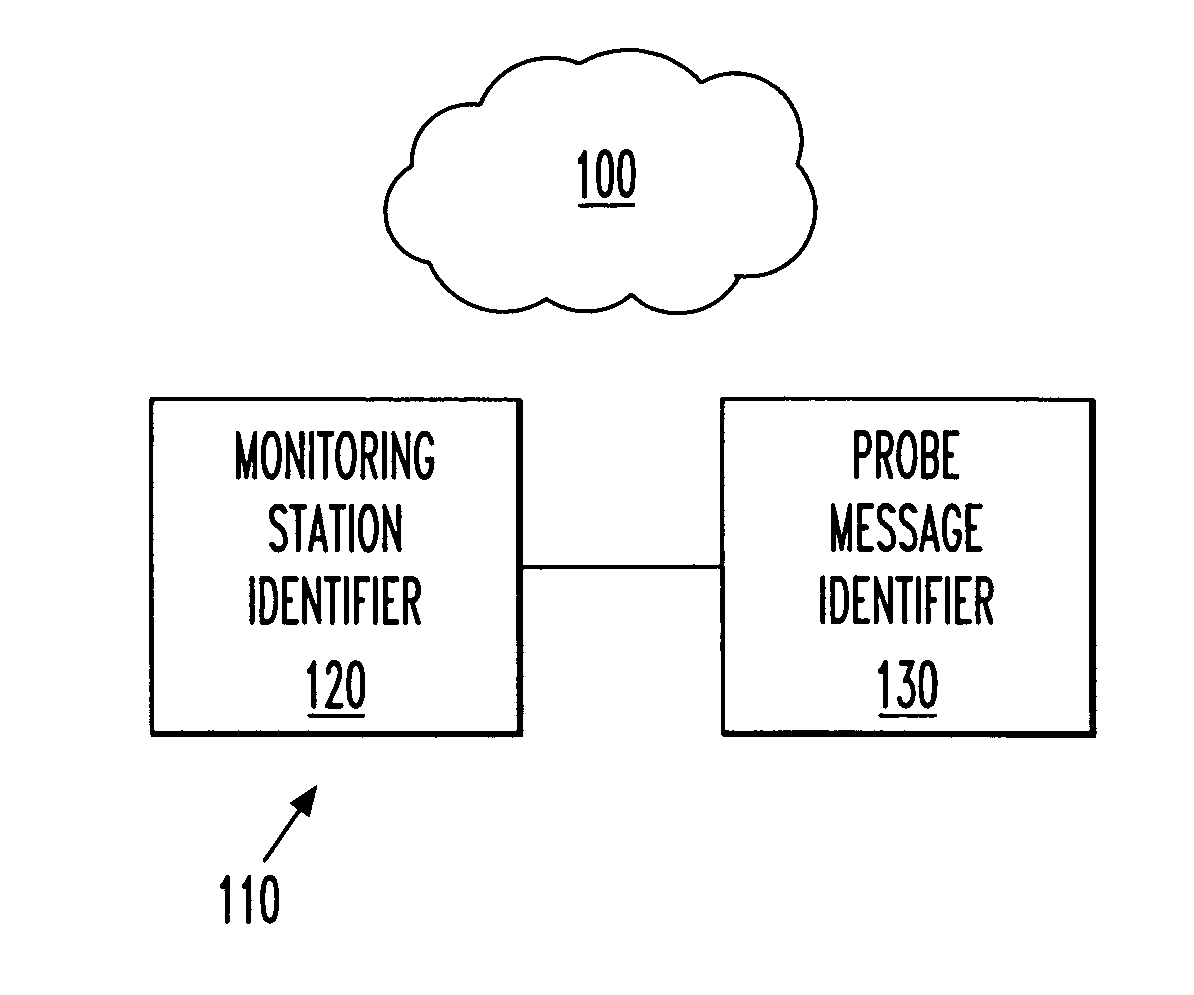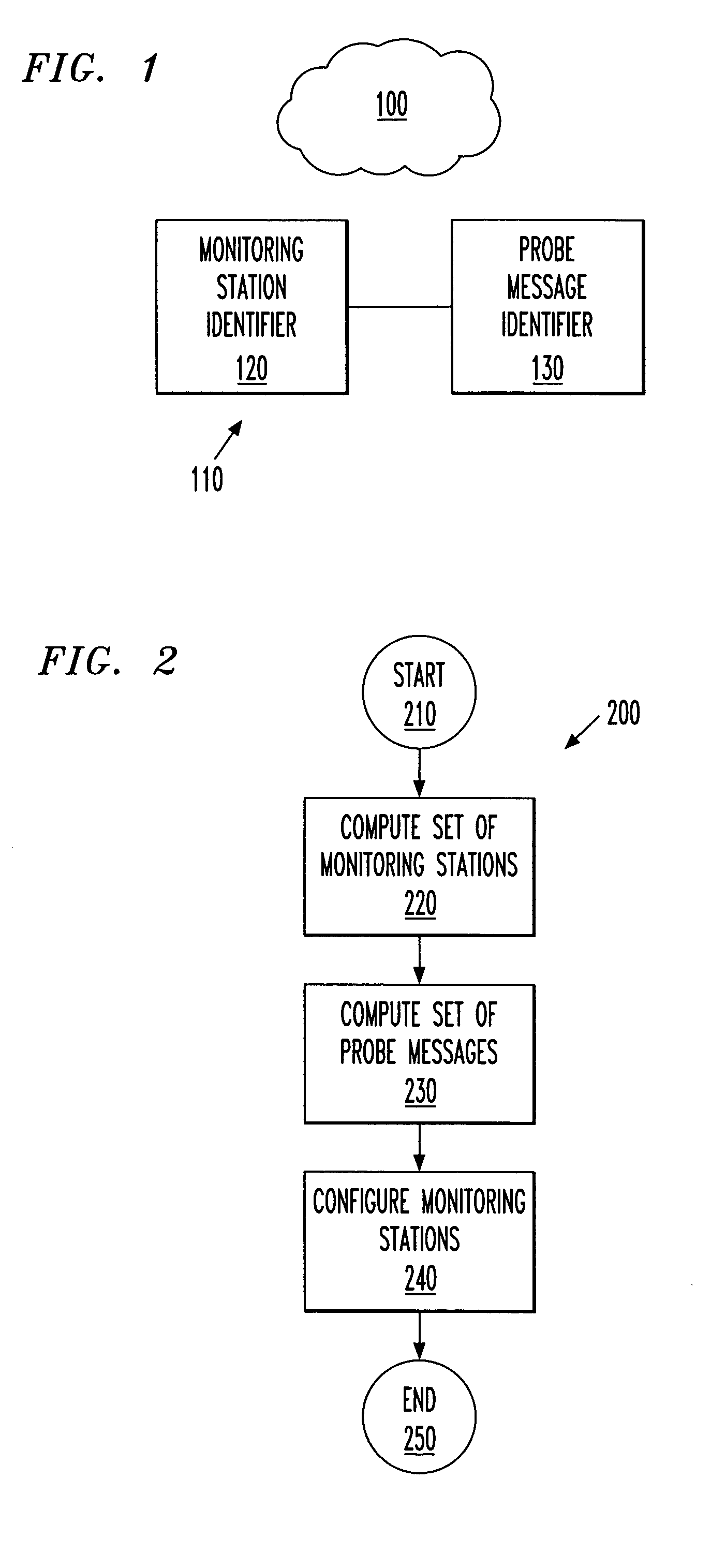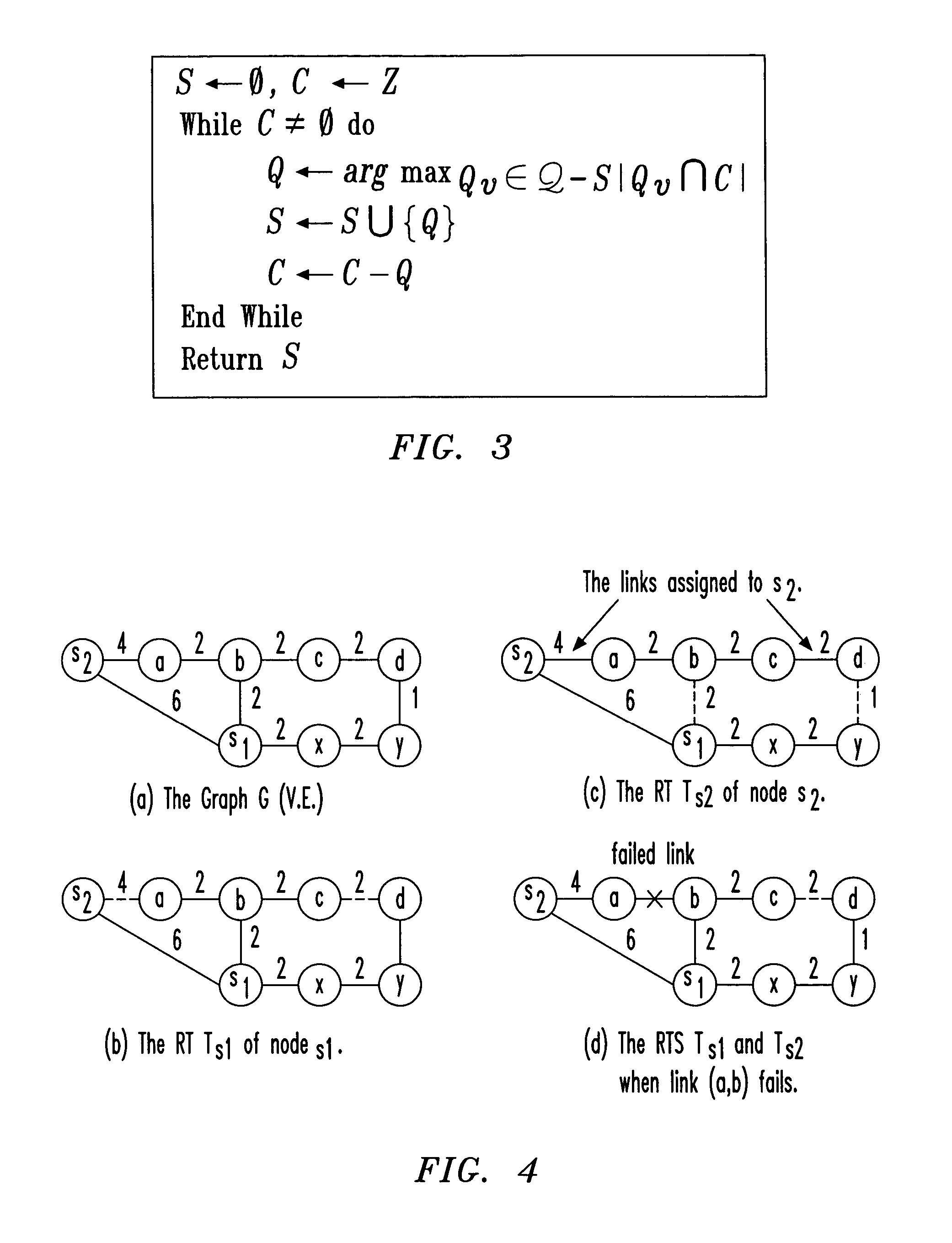System and method for monitoring link delays and faults in an IP network
a technology of internet protocol and link delay, applied in the field of computer network management, to achieve the effect of reducing monitoring overhead (cost)
- Summary
- Abstract
- Description
- Claims
- Application Information
AI Technical Summary
Benefits of technology
Problems solved by technology
Method used
Image
Examples
example 1
[0065]Consider the graph G(V,E) depicted in FIG. 4A, where each link is labeled with its weight.
[0066]Let S={s1,s2} be the set of selected monitoring stations. The RTs Ts1 and Ts2 are the shortest path trees rooted at nodes s1 and s2 as illustrated in FIGS. 4B and 4C, respectively. The simple probe message assignment algorithm assigns all graph links to be monitored by s1 except the links (s2,a) and (c,d) which are monitored by s2. Note that s2 transmits two probe messages m(s2,c) and m(s2,d) that traverse nodes a, b and c to measure the latency of link (c,d). Now, consider the failure of link (a,b) that causes the RTs of s1 and s2 to be modified as shown in FIG. 4D. (RTs typically adapt to failures in a few seconds or a few tens of seconds, depending on IP routing protocol parameter settings.) Specifically, the new RT for s1 contains the link (s2,a) instead of (a,b), while the tree for s2 contains the links (s1,b) and (y,d) instead of (a,b) and (c,d). Clearly, neither s1 nor s2 det...
example 2
[0072]Consider the graph in Example 1, and assume a failure of the link (a,b) monitored by s1. The hop distances from s1 to nodes a, b before the failure are hs1,b=1 and hs1,a=2, and they remain the same after (a,b) fails. Thus, s1 cannot detect the failure of link (a,b).
[0073]The above problem can be fixed by associating the same destination address with the two probe messages for link e=(u,v). Let m(s,t,h) denote the probe message sent by source s to a destination node t with TTL value set to h. Further, let Rm(s,t,h) be the node that replies to the probe message. Assuming that node u is closer to station s than node v, i.e., hs,us,v, station s can monitor both the delay as well as failure of link e by sending the following two probe messages: m(s,v,hs,u) and m(s,v,hs,v). These messages have the same destination, v, but they are sent by s with different TTL values.
[0074]Clearly, in the absence of failures, the reply for the first message is sent by node u while the reply for the s...
example 3
[0078]Consider the graph in Example 1 where station s2 monitors links (s2,a) and (c,d), and s1 monitors the remaining links. Suppose that for probe message m(s2,d,3) that monitors link (c,d), Rm(s2,d,3) is y instead of c. This could be the result of the failure of either link (c,d) or (a,b). In both cases, the new routing path from s2 to d traverses nodes s1, x and y. Since s2 does not monitor link (a,b), it cannot conclude, by itself, which of links (a,b) or (c,d) have failed.
[0079]An algorithm for accurately pinpointing the faulty link, in which each monitoring station sends its failure information to the NOC, will now be presented.
[0080]As shown in Example 3, with probe message assignment , when a link fails, the station monitoring the link detects the failure, but may not always be able to accurately identify the location of the failed link. However, station s can narrow down the possible candidates to links in the path connecting it to the failed link.
[0081]It will be stated wi...
PUM
 Login to View More
Login to View More Abstract
Description
Claims
Application Information
 Login to View More
Login to View More - R&D
- Intellectual Property
- Life Sciences
- Materials
- Tech Scout
- Unparalleled Data Quality
- Higher Quality Content
- 60% Fewer Hallucinations
Browse by: Latest US Patents, China's latest patents, Technical Efficacy Thesaurus, Application Domain, Technology Topic, Popular Technical Reports.
© 2025 PatSnap. All rights reserved.Legal|Privacy policy|Modern Slavery Act Transparency Statement|Sitemap|About US| Contact US: help@patsnap.com



